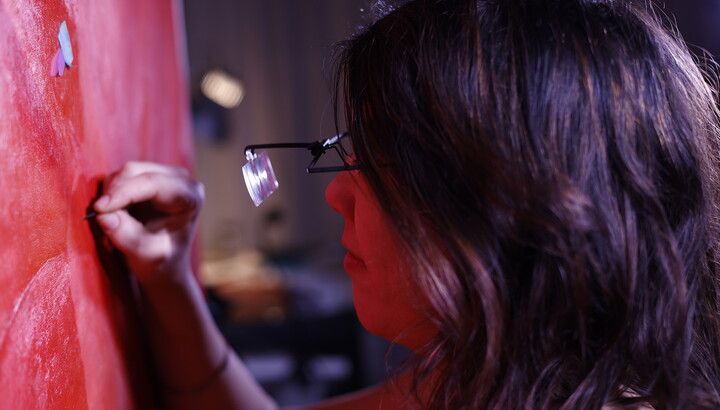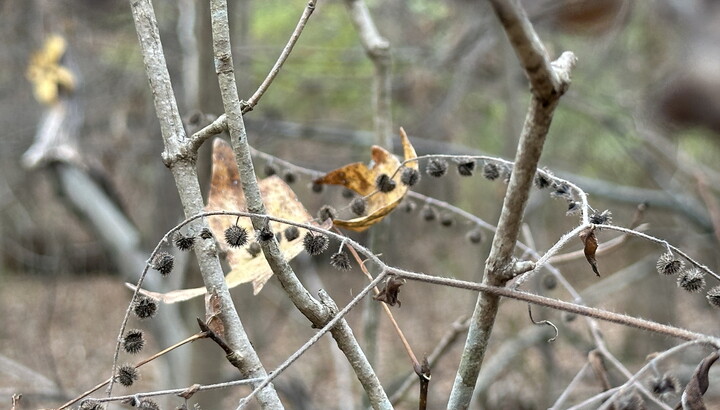The Carter Blog
Carter ARTicles
An open book: The Gentling Study Center
Oct 08, 2021
While many people think of museums as places that just house history and art—and that’s not wrong!—they are so much more. What you may not know is that museums are full of people actively researching many topics including art, history, and science. The Carter is no different. With a library and archive that holds hundreds of thousands of objects, the Carter is a research destination for the study of American art and artists.
With the help of a generous donation, the Gentling Study Center in the Carter’s Library was established in 2019 to further the legacy of the Fort Worth brothers for which it is named, and to provide a physical space—the Study Room—where scholars, researchers, and others who want to take a deep dive into American art can effectively do so.
We sat down to chat with Gentling Curator and Head Museum Archivist Jonathan Frembling to learn about the Study Center, the Study Room, and what goes on there.
Q: The Gentling Study Center and Study Room were established in 2019. What are they and what can visitors do in the Study Room?
JF: The Study Room is a physical place where a patron at any level, from scholars to casual walk-in visitors, can request (in advance of a visit) that work not currently on view be brought up on a temporary basis for observation. If you love the work of Alfred Stieglitz or Laura Gilpin or Charles Russell, for example, and that favorite piece of yours is not up right now, we can bring it up to the Study Room. If you want to dive into the writings of any of these artists, we have those archives here, so we bring them into the Study Room to be viewed and explored in parallel with the art, the Library collection, and the resources in the Library.
The Gentling Study Center supports a program of activities that allows us to take our artist archives—the Gentling archives being the lead example of that—and bring them out to be enjoyed by the public and incorporated in an active way into the exhibitions, publications, and scholarly research endeavors of the Museum.
Q: Do researchers who use the Study Room study only the work of Scott and Stuart Gentling?
JF: The Gentlings are front and center right now as we open the exhibition and programming around it—we’ve got a retrospective, we’ve got a catalogue, we have all these things coming out of that initiative. And we will always look to advance understanding of their careers through fellowships and projects in the future. But we’ve also seen that the Study Room is being used heavily by Davidson Family Fellows doing research on our collection as a whole. The Study Room allows us to host these fellows in direct proximity to their workspace. And the Study Center will be a catalyst for developing deeper understandings of other parts of our collection as well.
One of the more interesting examples is a scholar who is working on Eliot Porter’s photography. The researcher is a photographer who is looking at what climate change is doing to a controlled environment. He wants to try to recreate the exact shot Porter took and understand what climate change has done to that scene. And so he did that, and, sure enough, so much of the landscape has been denuded of its vitality because the climate is different than it was. It’s a really interesting way to look at art.
Q: How has the research done through the Gentling Study Center contributed to the current retrospective of the brothers and their work?
JF: The Gentling Fellowship is a part of the larger Gentling initiative that includes the Study Center, the Study Room, the current retrospective exhibition, and the monograph. The first three fellows focused on the Gentlings specifically: Erica Doss out of Notre Dame, Barbara Mundy out of Tulane, and Scott Barker, a Fort Worth art historian. These first three fellows used Gentling papers, the art, and all kinds of things to generate the scholarship in the exhibition and the book. Nothing had ever been written of any length about the Gentlings. At most two-page articles, that’s it. With this big, printed monograph, that’s the moment when people start to go wow, these guys are really interesting and created some very impressive art.
Q: In the future, how do you hope to see the Gentling Study Center contribute to the study of other underappreciated artists in the Museum’s collection?
JF: The retrospective and the book are the obvious answers to the Gentling part of this question, but we’re not hanging up the Gentlings and forgetting about them just because we’ve completed this marquee event. We are looking at our next round of Gentling fellows and have tentatively extended invitations. We’d like to look at how the brothers are a continuation of the legacies of other artists whose archives we have.
We have the papers of the Fort Worth Circle, for example, so that’s the 1930s to World War II. We just acquired the papers of sculptor and artist Charles Truett Williams. What’s cool about this is that he literally picks up where the Fort Worth Circle leaves off. Williams was active from 1945 through his death in 1966. The Gentling brothers start their active career in 1961. And so you have this unbroken chain of artists from the ‘30s through Scott Gentling’s death in 2011 and can see the local art scene through the lens of this succession of artists. This is how an idea is born—you take this and it leads into this and down the line back and forth across this historical time line.
I’d love to engage some film historians to look at the papers of photographer Karl Struss—he was the youngest member of the Photo-Secession, the Alfred Stieglitz group active pre-World War I. After the war, he decided to go out to Hollywood and try this new thing called “the movies.” He was so great at it he won the first Academy Award for cinematography in 1929! He has all of this early New York still photography and then he has this post-war motion-picture stuff. His film work we’ve looked at in the past, but not necessarily through the film historian’s lens.
That’s the nice thing about the Gentling fellowship. It doesn’t have to be traditional—there are all sorts of ways we can slice and dice it.
Q: How can visitors use the Study Room?
JF: A visit to the Study Room can be requested through the collections page on our website. There’s a request form there that says, “Want to take a closer look?” You tell us what that something is and who you are, then we work to set up an appointment.
The Museum is free for a reason—it’s here as a gift, a resource, an asset for the community no matter who you are—and that includes the Library, archives, and art collection. We are careful about how you interact with them, but that does not mean that we do not want you to use them. This is an experience that you can create for yourself. Art can be so meaningful, and the Study Center and Study Room can create an experience that’s meaningful to you.






